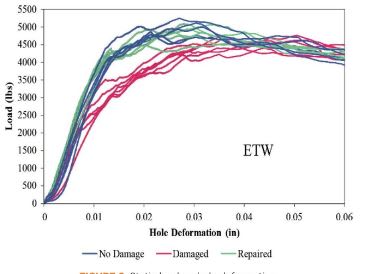Tomfh
My assertion that injection repairs are ineffective is based on over 50 years of aircraft maintenance of bonded structures, and I have seen thousands of injection repairs inmetal bonded structure that have resulted in bond failure in later service. Like you, my assertion was challenged by a senior technician, so I invited him to select a range of examples on scrap parts that we could destructively examine. Of 14 samples, every single injected "repair" was easily separated from the mating surfaces. I have also seen an example of a production injection repair to supposedly bond a rudder core to the trailing edge of the rudder mast. Remember that this component had zero hours when the repair was undertaken, so there is no chance of secondary contamination interfering with the bond, I was indirectly involved with the investigation after the rudder departed the aircraft in flight. The injection was in the region where the core was bonded to the mast, with that bond being the mechanism to transfer shear loads into the mast. However, because the bond was ineffective all of the shear loads were forced through the skin to mast fastened joint, and that caused a fatigue crack that eventually led to the fracture of the skin and failure of the rudder.
The reason that people blindly follow the mantra of undertaking injection repairs is that the process fills the air gap such that NDT can no longer find the defect. In reality, the process only HIDES the defect. Understand that adhesive bonding requires chemical reactions at the interface, and that requires that the surfaces are chemically active. In the case of production voids in either adhesive bonds or composite laminates, the resin systems have experienced a full cure cycle, so the residual reactivity will be negligible. The only exception may be in cases where the surfaces have been separated by actual fracture and then repaired before the surface oxidises of becomes contaminated.
Now unless the test coupon used to validate the repair process replicates the fully cured glossy surface typical of the interior of a void, the test is meaningless. Bonding to a surface with a peel ply removed will not replicate the true situation. I have yet to see any valid test results
that would convince me. I really don't care how widely used the process is. It is wrong. Remember, the world was told as absolute facts that the world was flat and all the planets revolved around the earth.
Regards
Max

